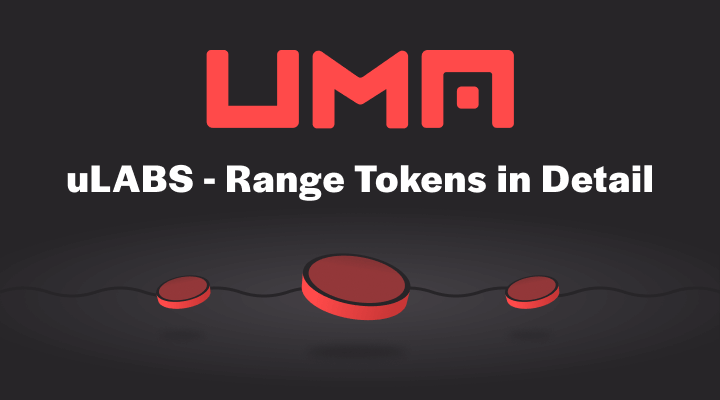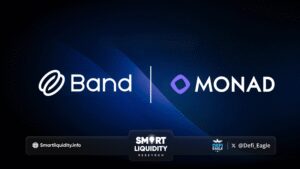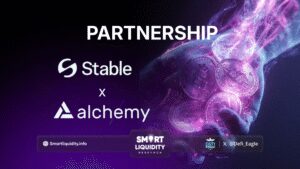UMA’s uLABS: Range Tokens in Detail


UMA provided a more technical explanation detailing the payout function and walk through how a range token is constructed and valued.
Review From First Article
The range token allows a DAO to use its native token as collateral to borrow funds. At maturity, if the debt is not paid, the range token holder is instead compensated with an equivalent amount of the collateral (the native token) using the settlement price of the native token to determine the number of tokens. This is similar to a yield dollar or a CDP (collateralized debt position); however, there are a couple of added features. A range token seller (the DAO in this case) cannot be liquidated and therefore, the number of tokens given to the range token holder is capped. The range token holder is effectively short a put and will have exposure to the downside of the native token below a certain price. To compensate the range token holder for taking on this “default” risk, the holder is rewarded a call option on the native token. A minimum number of native tokens is given to the range token holder no matter how much the native token rallies. The combination of the structure creates a tradeoff between the seller and the buyer.
Range Token = Yield Dollar — Put Option + Call option
Using the above generalized formula they can start to construct the payout function of a range token. They will start by looking at the payout of a Yield Dollar and add on the two options. They will use the Uniswap treasury example from the first article to put actual numbers in the equations to better illustrate the formulas as well.
Yield Dollar
Yield Dollar — Put Option
The yield dollar payout above highlights an undesirable scenario for the DAO where the token price drops significantly and the amount of tokens awarded to the yield dollar holder rises exponentially. This scenario can be avoided by capping the number of tokens the DAO is willing to reward the yield dollar holder. This also results in a floor price of the token where the yield dollar holder will be guaranteed the notional is returned. Effectively the yield dollar holder sells a put option to the DAO.
Range token = Yield Dollar — Put Option + Call Option
The yield dollar — put option structure above provides a valuable option to DAO treasury; however, if these lenders are reluctant to take on that risk it could be costly to the DAO as these lenders would demand very high yields to sell that put option. One way the DAO can incentivize these lenders is by rewarding a call option to allow them to participate in a significant rally. This creates the range token structure. Range token holders are returned a number of tokens equivalent to the notional debt in USDC for a specific price range; however, they participate on the downside below this range and on the upside above this range.
How To Price The Range Token
The range token risk profile is very similar to a risk reversal in traditional finance. The typical risk reversal involves buying a put option and selling a call option to protect your long underlying position. This is effectively what the seller of the range token has done and the range token holder is actually holding the opposite position. With a liquid options market or with some assumptions made on the implied volatility of the underlying native token, one can attempt to price the range token with a Black-Scholes model. In the Uniswap example above, the range token can be broken down as selling 8 $UNI put options at a strike price of 12.5 USDC and buying 2.5 $UNI call options at a strike price of 40 USDC. Determining the fair implied volatility of these options is challenging given there are few if any liquid markets on DeFi tokens. One can use the implied volatility of ETH as a base and guide to help. Ultimately, the supply and demand drives the price of these options and consequently the price of a range token. With the expected price of the options we can again use the formula below to derive a price for the range token.
How To Build The Range Token On UMA
The range token will be built using UMA’s new financial contract template called the Long Short Pair (LSP). A recent article was released providing details of how it functions. It is a simple contract that allows a minter to deposit collateral and mint a long and short token. The minter can keep the token he/she wants and sell the other one to gain the desired risk exposure. At expiry the collateral is divided between the long and short token holders through a defined payout function using UMA’s Optimistic Oracle for settlement. The range token payout function will be included in the financial product library for any developer to use. This means a range token can be immediately built now without any governance vote for any ERC-20 token that is already approved by the UMA community.
What is UMA?
UMA is a decentralized financial contracts platform built to enable Universal Market Access.
📰 INFO:
https://medium.com/uma-project/ulabs-range-tokens-in-detail-f24ceffdf90b




